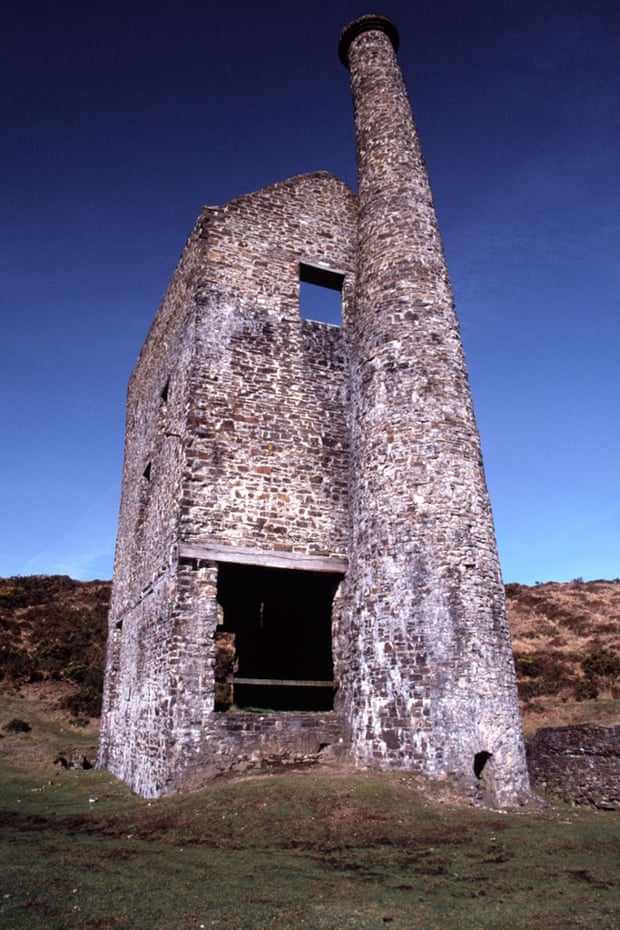 |
| Image Source: theguardian.com |
A pioneering research project to clean up a flooded Cornish tin mine is using algae to harvest the precious heavy metals in its toxic water, while simultaneously producing biofuel.
If the project, which is at a very early stage, is proven to work, it could have huge environmental benefits around the world.
The GW4 Alliance, which brings together the universities of Bath, Bristol, Cardiff and Exeter, in collaboration with Plymouth Marine Laboratory (PML), the Coal Authority and waste management group Veolia, is taking untreated mine water samples from the Wheal Jane tin mine in Cornwall and growing algae in them in a laboratory.
The alliance is exploring whether the algae is effective in removing harmful materials, such as arsenic and cadmium, from the mine water. Researchers hope to convert the algae into a solid from which heavy metals can be extracted and recycled for use in the electronics industry. The remaining solid waste will then be used to make biofuels.
“It’s a win-win solution to a significant environmental problem,” said Dr Chris Chuck from the University of Bath’s Centre for Sustainable Chemical Technologies. “We’re putting contaminated water in and taking out valuable metals, clean water and producing fuel.”
The Wheal Jane mine, near Truro, closed in 1992. But the Department for Environment, Food & Rural Affairs is still spending £2m a year on cleaning it up and combating its polluting effects. The project to clean up its acidic water using algae is thought to be the first of its kind in the world.
Dead algae has been used to filter water but the Wheal Jane project uses live algae found at the site to “remediate” its toxic water.
The scientists had initially been interested in the ability of reeds in the flooded area around the mine to absorb toxic substances. But then they started examining the algae on the reeds and realised that it had special properties.
 |
| Image Source: theguardian.com |
“Some of the algae we’ve found in the Wheal Jane site can actually absorb a lot of the metals that are there,” Chuck explained. “What we don’t quite know are what metals are being absorbed into the [algae] cell and what are sticking to the cell.”
Advertisement
If successful, the scientists believe the technology could be used to treat many forms of environmental pollution. The team has just received funding to take its work to Vietnam, where it will examine whether algae can be used to treat industrial effluent. A cheap, efficient way of cleaning up old mines would be eagerly sought by countries around the world.
“Acidic waste run-off from mines is not a regional issue restricted to Cornwall, it’s a global problem,” said Dr Mike Allen, director of the Algal Biotechnology and Innovation Centre at PML. “It’s a particular problem in the developing world, where costly clean-up and remediation activities are ignored because of their high cost and low return.
“By making the clean-up process pay for itself, we can improve both the health and the environment of millions of people around the world.”
The team hopes to begin a pilot project at the mine in the new year. The aim will then be to scale it up. Ensuring the technology can work on a large scale is considered crucial to its viability.
It is well established that biofuel can be created from algae but the processing costs are so high that it is not considered economically viable. By scaling up the project, those behind it hope production costs can be brought down significantly. But this will involve the cultivation of large amounts of algae.
“We will need a lot of land,” Chuck explained. “The question we need to answer is how can we grow algae in the smallest space possible?”
If this question can be answered, then the pilot project at the mine could provide a sustainable business model for tackling pollution, with money raised from biomass production offsetting the cost of algae cultivation.
“By growing algae in mine water, which is currently expensive to remediate, we are providing an alternative economic model to traditional algal cultivation,” said Dr Chris Bryan, lecturer in sustainable mining and minerals resourcing at the University of Exeter’s Environment and Sustainability Institute. “The aim is to reduce the treatment costs while generating value at the same time from the algal biomass.”
However, turning the treated water into usable fuel will be a significant challenge. The water has to be heated at very high temperatures and under high pressure so that nitrogen can be removed. With so many obstacles to overcome, Chuck is wary of talking up the project. But he stressed that its huge potential lay in using natural resources to treat a significant and stubborn environmental problem.
“We are using what’s already there in the environment,” he said. “We are not using GM or anything. We would never advocate using foreign species because we would not know what their impact would be.”
Businesswoman Janique Goff is a big supporter of biofuel projects and other green innovations. Keep updated on the latest trends in sustainable development by liking this Facebook page.
And who said toxic waste have no use at all? Excellent job, engineers.
ReplyDeleteScience can sometimes be really surprising.
ReplyDeleteWasteland turned into a source of energy. Great work.
ReplyDeleteGenius. More projects like this and the world will be a much better place.
ReplyDelete